
Key Points
- Utilities Have the Weakest Intermediate-Term Breadth
- NYSE Advance/Decline Metrics Remain Under Pressure
- Uptick in New Lows for a Second Consecutive Week on the NYSE
- S&P 500 Breadth is More Resilient
- Small Caps Remains the Worst of the Bunch
Chart in Focus:
While the equity market has been under pressure for the past week and half, breadth has weakened as well for the most part (see charts below). However, it is interesting to note that at the sector level, the group with the lowest percentage of stocks above their respective 50-day moving averages is the defensive Utilities sector. Roughly 32% of the stocks in the sector are above this measure of the intermediate-term trend. At the same time, the Utilities Index is in the process of testing its own 50-day moving average.
NYSE Breadth
The S&P 500 once again paid a visit to the 50-day moving average and, once again, this measure of the intermediate-term trend held as support. For the NYSE Advance/Decline Line, the 50-day moving average has proven to be resistance. After a brief trip above, the A/D Line has moved back below the moving average and continues to diverge with price.
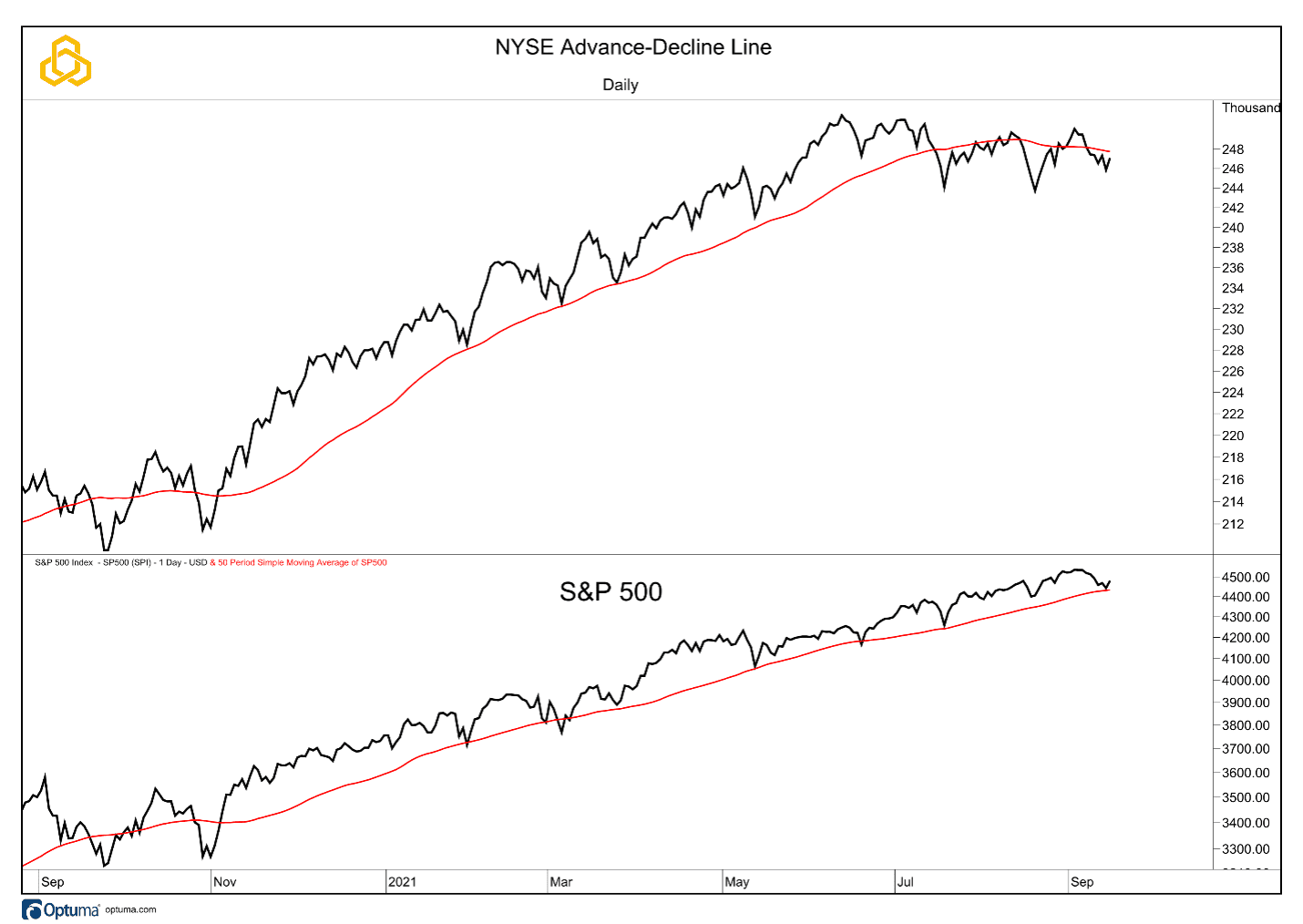
The same dynamic is also true for the NYSE’s Advancing – Declining Volume Line. This metric is battling a declining 50-day moving average and has not been able to get above it. At the same time, it continues to diverge with price.
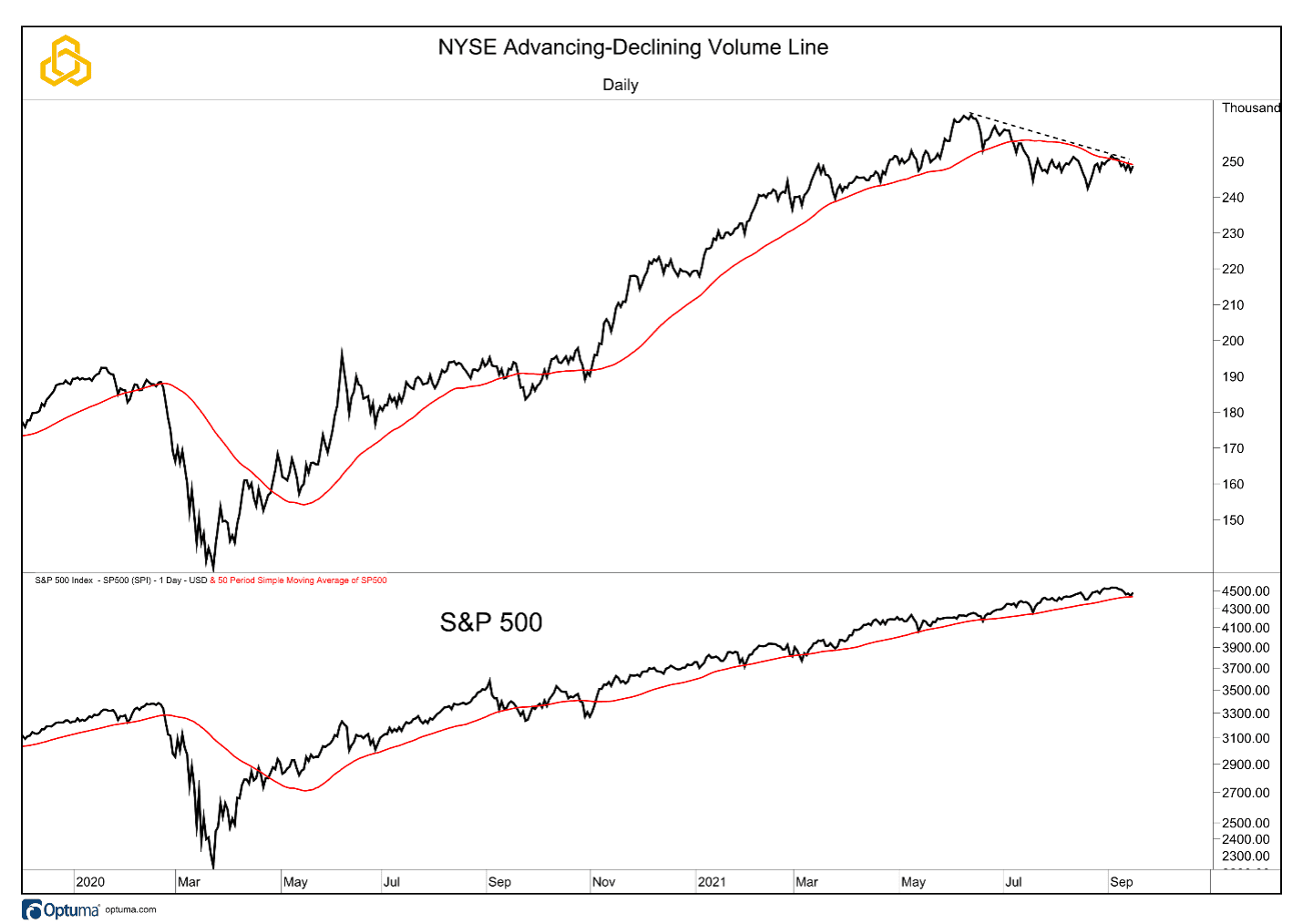
The 5-day moving averages of issues on the NYSE making new 52-week and six-month lows continued to move higher this week. If yesterday’s rebound in the equity markets is going to have staying power, we would expect to see these metrics quickly move back below 1%.
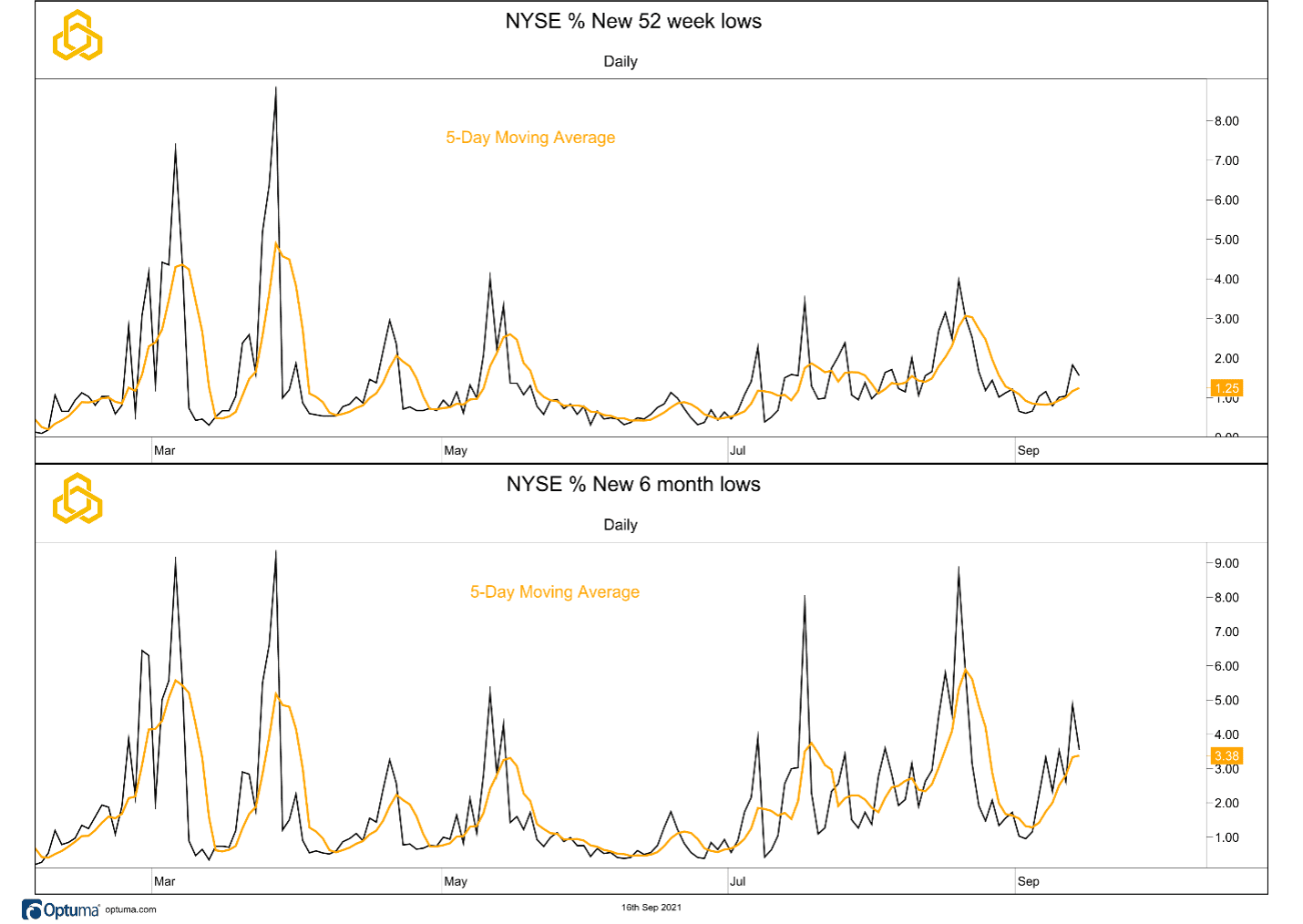
The 5-day moving averages of the percentage of NYSE issues making new six-month and 52-week highs has moved lower again this week. The case can be made that there is also a divergence in these metrics as the moving averages have been trending to the downside as the S&P 500 has been steadily grinding higher.
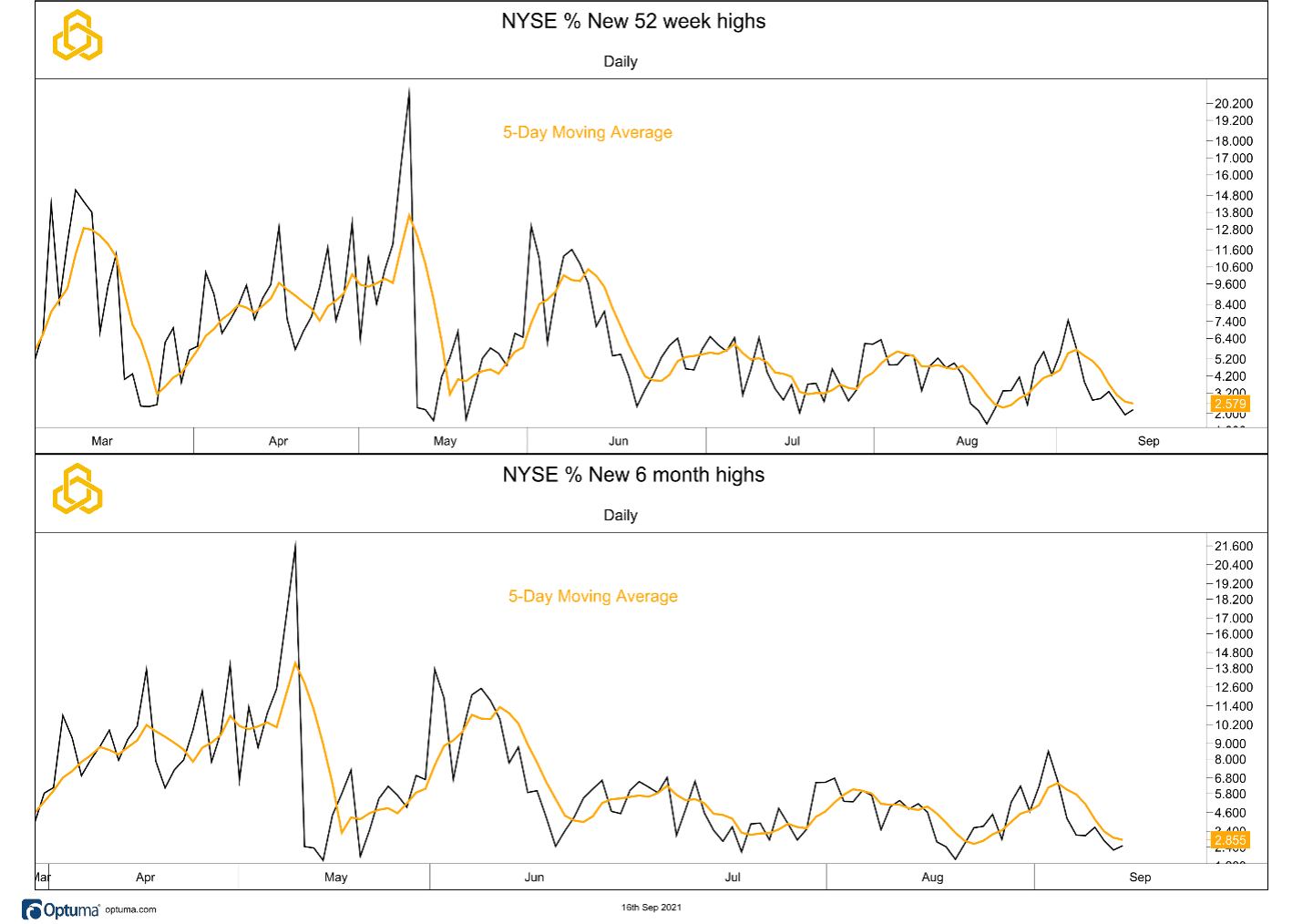
We often try to save the word “textbook” for perfect uptrends. However, the description applies to downtrends as well, and the percentage of NYSE Issues trading above their respective 200-day moving averages is in a textbook downtrend. The series of lower highs and lower lows has been in place for the majority of 2021 despite the textbook uptrend for the S&P 500.
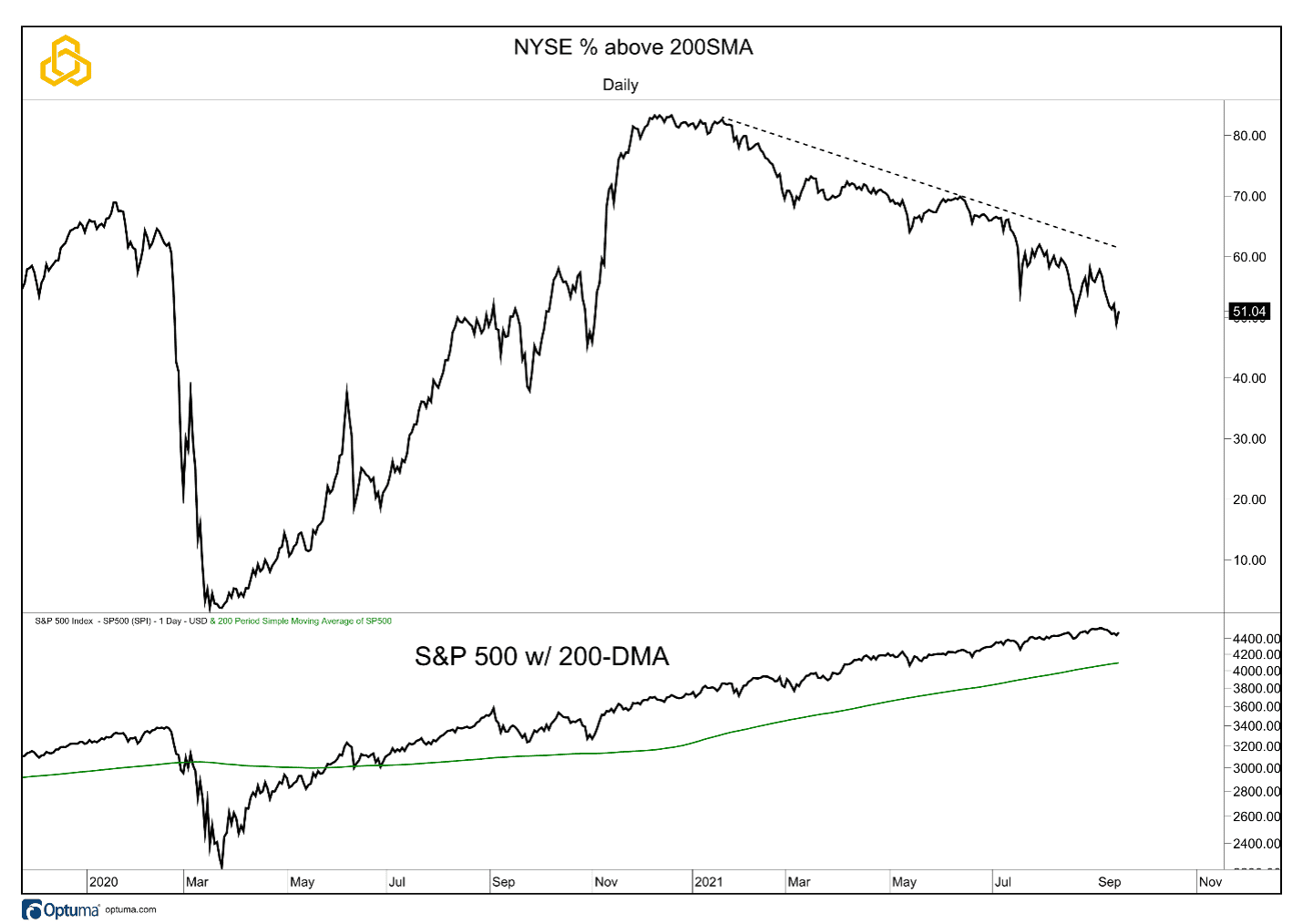
The percentage of NYSE issues trading above their own 50-day moving averages is flat over the past week after a false breakout in late-August. This is a somewhat encouraging development as is the fact that this metric has been making higher lows of late.
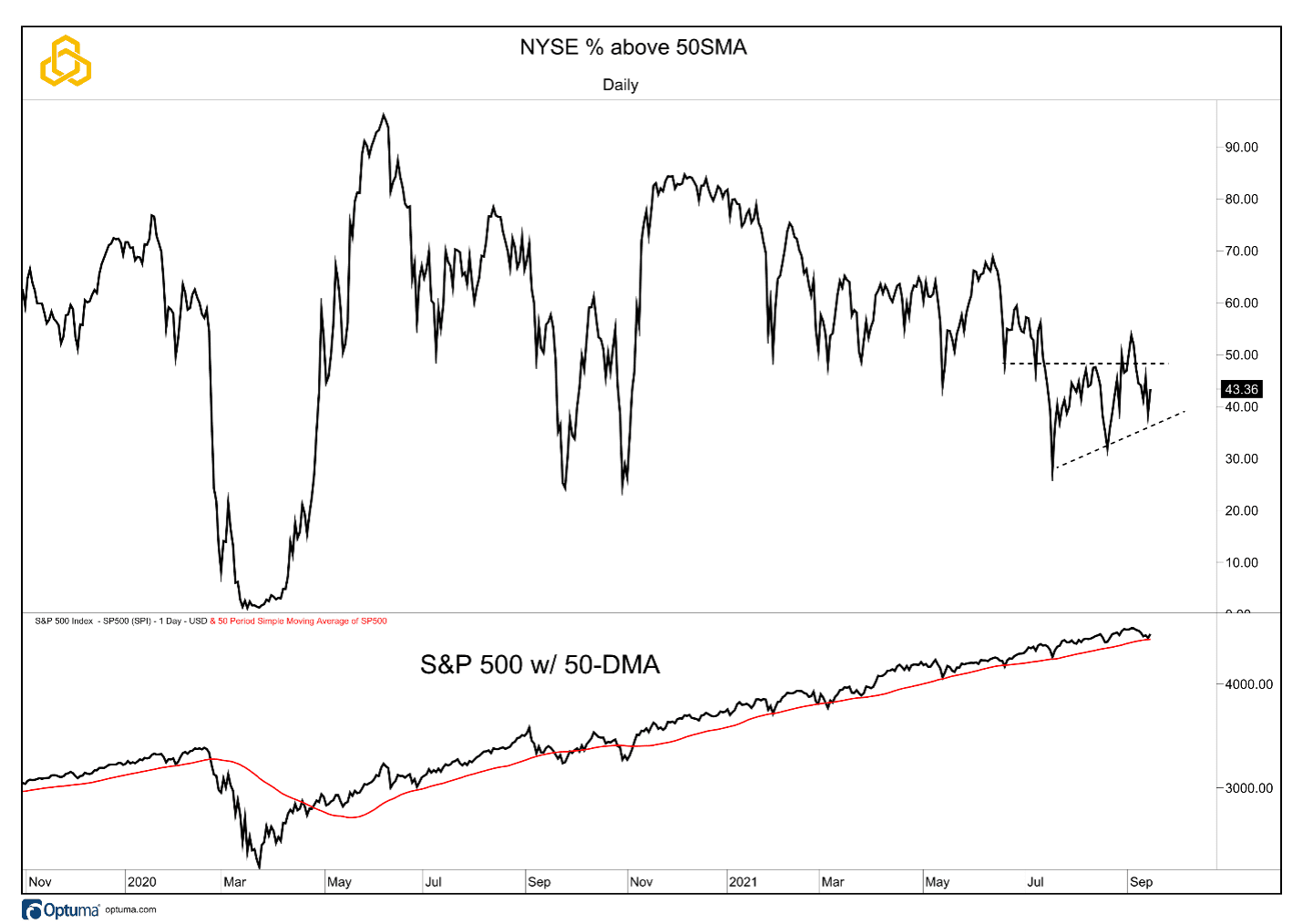
The percentage of stocks trading above their respective 20-day moving averages is also flat over the past week and has also been making higher lows. The S&P 500 is in the process of turning higher to reclaim its own 20-day moving average.
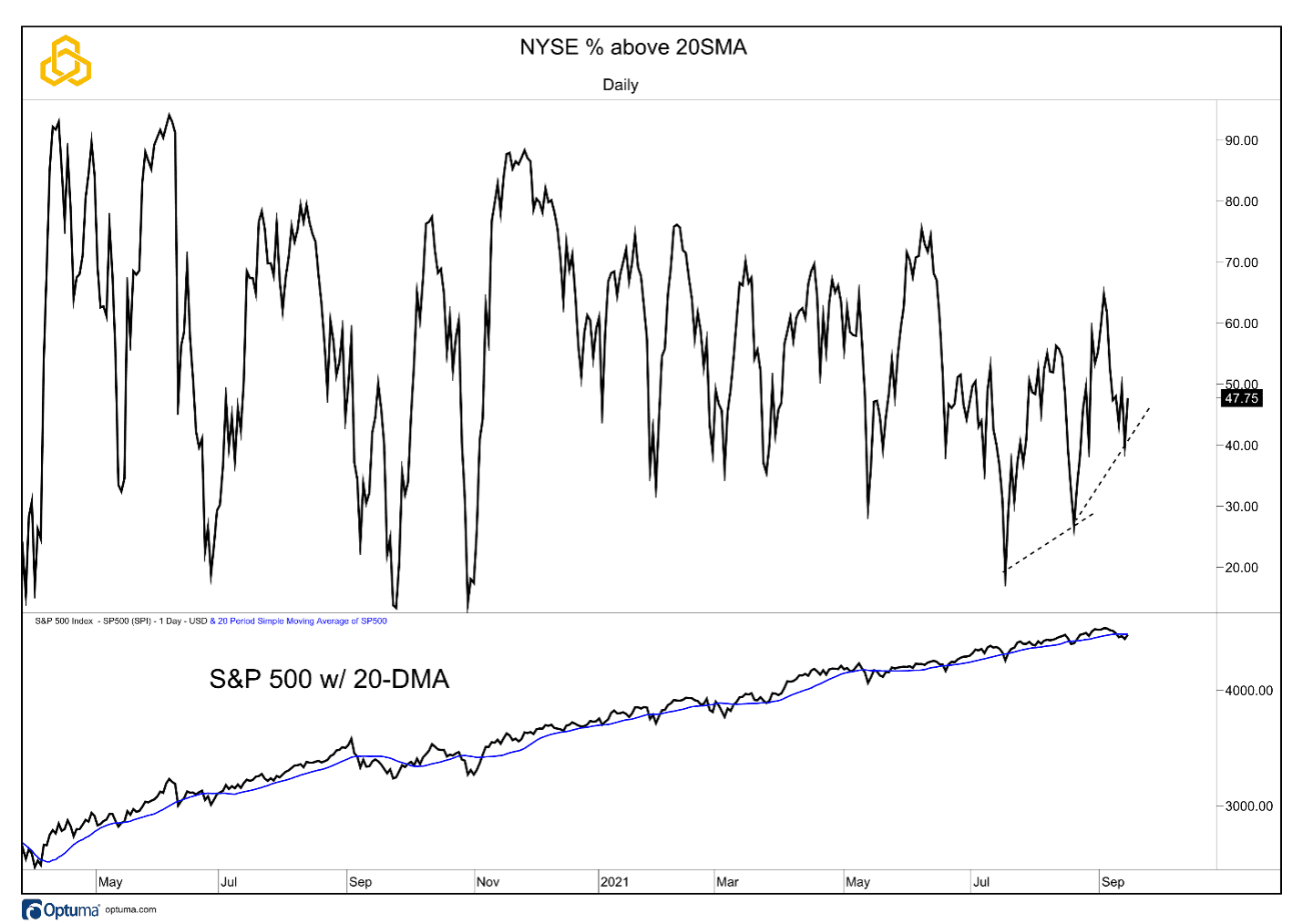
S&P 500 Breadth
Breadth metrics for the S&P 500 are mixed over the past week, with the short-term data taking more of a hit than the long-term data.
- Advance/Decline Line: Holding its 50-day moving average, same as the index.
- Percent Above Their 200-Day Moving Average: 74% from 73% last week.
- Percent Above Their 50-Day Moving Average: 52% from 58% last week.
- Percent Above Their 20-Day Moving Average: 41% from 48% last week.
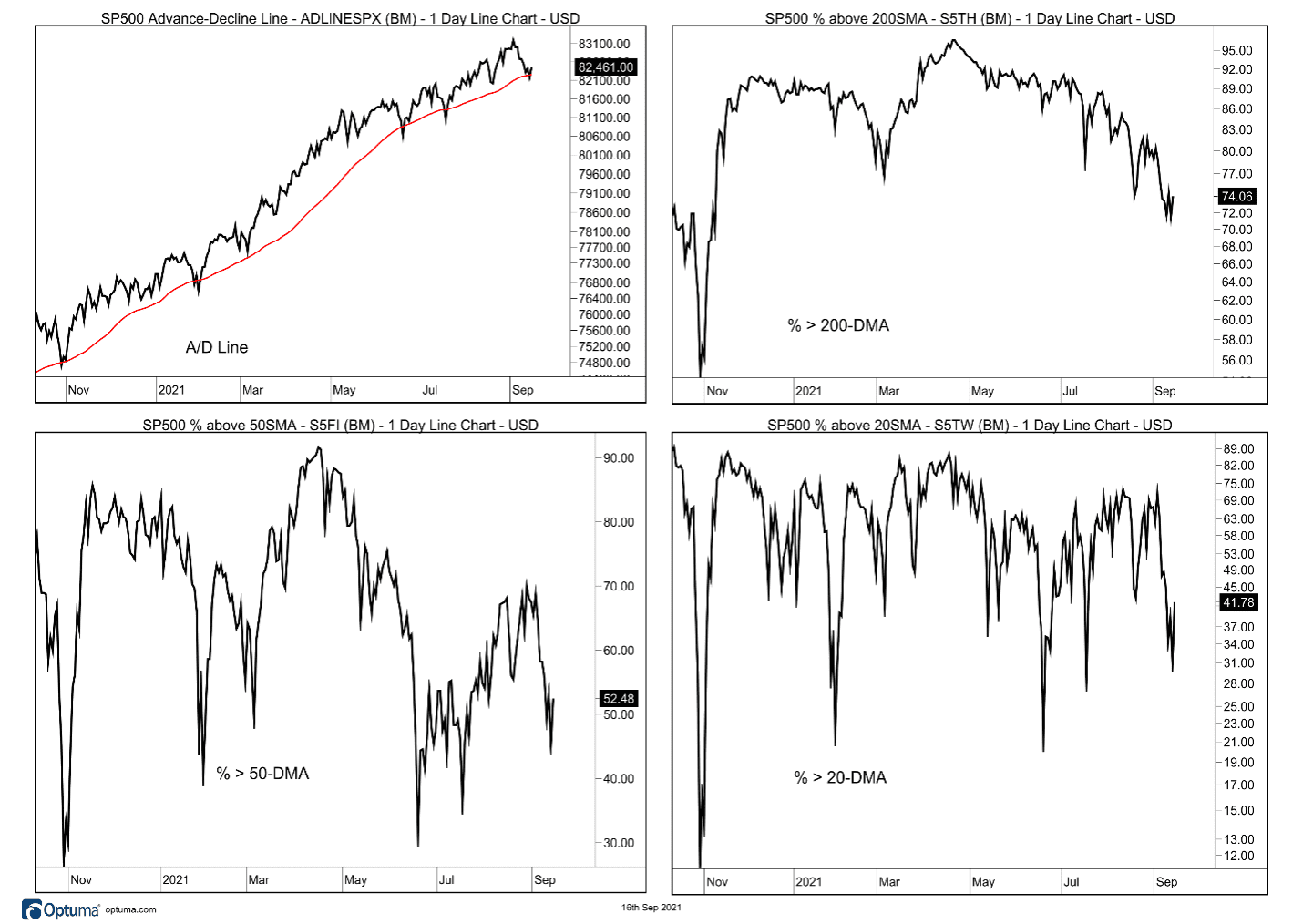
Small Cap Breadth
Breadth metrics for the S&P 600 Small Cap Index have weakened further this week.
- Advance/Decline Line: Below the 50-day moving average, another test of support.
- Percent Above Their 200-Day Moving Average: 48% from 54% last week.
- Percent Above Their 50-Day Moving Average: 38% from 44% last week.
- Percent Above Their 20-Day Moving Average: 33% from 41% last week.
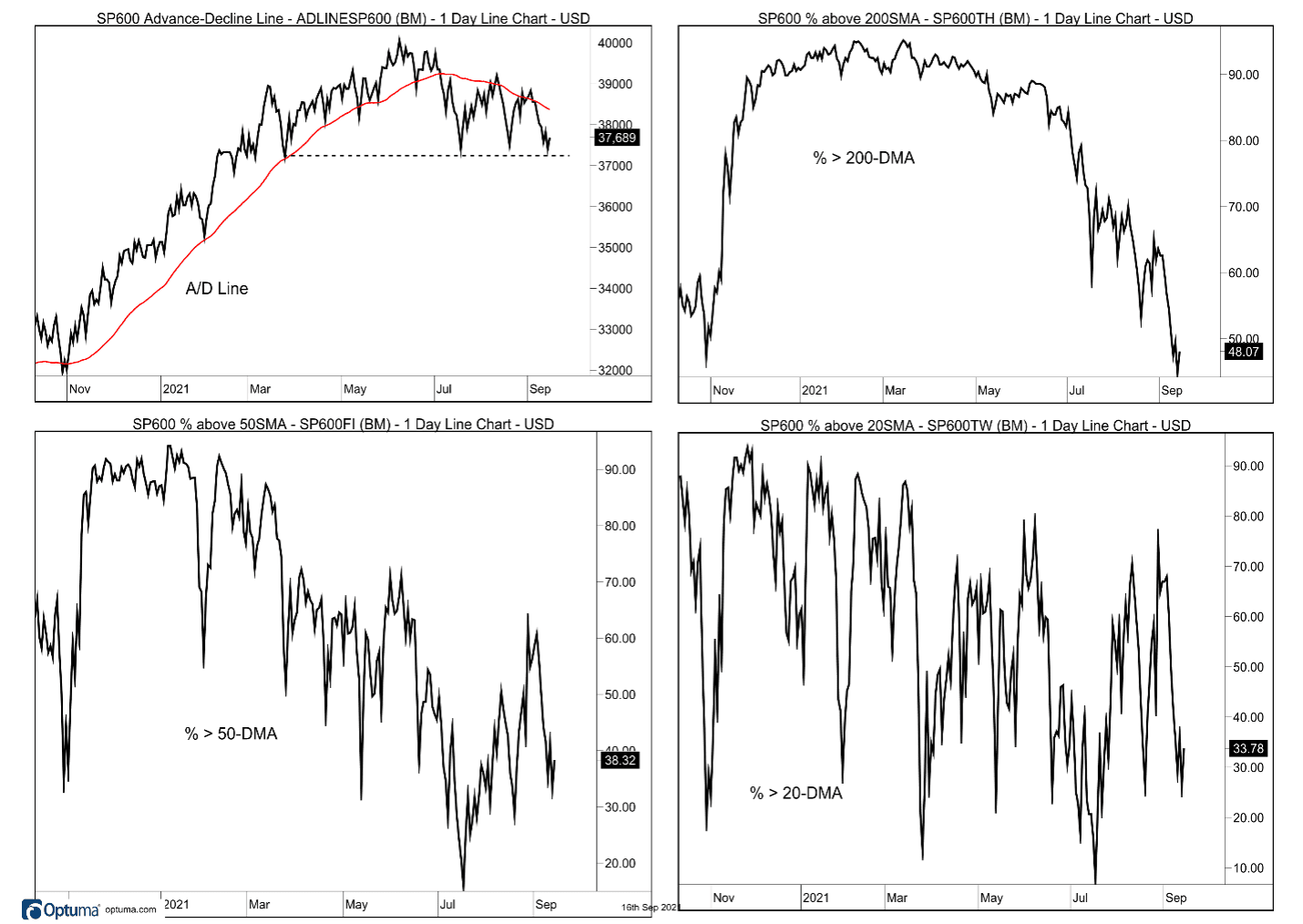
Take-Aways
As we would expect after more than a week of selling pressure, breadth metrics have mostly weakened. The S&P 500’s stats have held up the best and the index has once again found support at the rising 50-day moving average. Small Caps remains the weakest and the metrics have ticked lower over the past week. Across the board, divergences remain in place, prompting the question, “how long can they last”?
Disclosure: This information is prepared for general information only and should not be considered as individual investment advice nor as a solicitation to buy or offer to sell any securities. This material does not constitute any representation as to the suitability or appropriateness of any investment advisory program or security. Please visit our FULL DISCLOSURE page.
